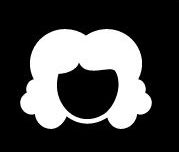How to Make Your Hair Stand Up Naturally


There are a few ways to get your hair to stand up. One is to tease and comb it upwards. Avoid using plastic combs and brushes. Static electricity can be a real problem when it comes to hair, so avoid these products whenever possible. You can also use a bandana to hold your hair in place. Then, wet your hair again to reset it. Another method is to use a light relaxer to make your hair grow down. The hair will eventually return to its original texture over a few weeks.
Comb and tease your fingers upwards
If your hair is flat and lacks volume, adding a little product will create a little lift in your crown. Depending on the length of your hair, comb the product from roots to tips. Backcomb all the way to the ends. This style works best with straight hair. Once your hair has the desired volume, use a comb to smooth it out.
While hair products are necessary, some men don’t like the way they feel on their scalp or the ingredients. To make your hair stand up naturally, you can try getting a longer cut in the front and using water, heat sources, or brushing techniques. None of these methods require hair products, although most will require additional tools. But, you should try them out to see which one is best for you!
A technique that makes hair stand up naturally is called teasing. While teasing is a hairstyle that doesn’t necessarily mean it’s bad, it’s still useful to know how to do it properly. L’Oreal Professionnel artist Cassi Pinder breaks down the basics and gives tips for how to tease your hair. You’ll be amazed at the beautiful results you can achieve!
Avoid plastic combs and brushes
To make your hair stand up naturally, avoid plastic combs and brushes. Plastic combs and brushes are made from plastic, which generates static electricity. Instead, use wooden combs or boar-bristle brushes. Avoid metal combs, which can break and damage your hair. Wooden combs can be reusable, too. Use microfiber towels instead of terry cloth.
To reduce static, you can use a wooden comb. Wooden combs have rounded teeth and do not cut your scalp or ill-distribute oils and dirt. Metal combs, on the other hand, have a high static charge and spread dirt over your hair. To avoid static, avoid plastic combs and brushes and use wooden combs.
Wooden combs can help your hair stand up naturally and prevent frizz. Combs made of wood contain carbon, which is a negative electrical charge and makes your hair lay down more easily. They also help tame stray strands and seal in moisture. Avoid plastic combs and brushes, which are not only bad for the environment but also harm your hair.
Another important tip to avoid plastic combs and brushes is to use natural hair combs. Metal combs may damage your hair by removing the cuticle plates. Using plastic combs can also make your hair dull. Instead, choose wooden combs made of vulcanite, a hard rubber with anti-static properties. They are also easy to clean. If you have a natural curl pattern, avoid using plastic combs.
If you must use a hairbrush, choose a rounded-bristled one. The rough bristles on plastic brushes will rip your hair out. Besides being hard on your hair, they may also cause microtears on your scalp. In addition to hair damage, these brushes can actually make your hair stand up in the first place. They can even cause a split-end.
Avoid static electricity
To avoid static electricity, avoid using certain products on your hair. Products containing sulphates are the main culprits, as they dry out hair and cause it to become more prone to static. Avoid these products if you have curly hair or dry hair. Instead, use hair products that have a low sulphate content. This will help your hair to resist static better. You can also try using a leave-in conditioner.
Static electricity occurs when opposite charges attract. This can cause frizz or shocks. You should avoid touching your hair when it’s in the winter, as dry air and heavy clothing can lead to static electricity. Avoid static electricity to make your hair stand up naturally. And remember that static electricity is more common in dry climates. So avoid using dryers and hair curlers during this time of year. If you’ve always wanted to have beautiful, bouncy hair, this article will provide you with a step-by-step guide to make your hair stand up naturally.
One way to prevent static electricity is to make sure your hair gets plenty of humidity. A humid environment leads to less static electricity buildup. This is especially true during the cold winter months. You can reduce the risk of static electricity by using ionic blow dryers, a metal comb, and a clarifying shampoo. These are just a few of the ways you can avoid static electricity and make your hair stand up naturally.
The main cause of static electricity in your hair is a lack of moisture. When you’re not properly hydrated, hair becomes dry and brittle. Dry weather also aggravates this problem. Avoid static electricity by following these simple tips. You’ll be amazed at the results! They’re worth the effort. Don’t let staticky hair ruin your day and your style. There are easy, inexpensive ways to keep your hair looking fresh.
Apply moisturizer to your face. This will help seal in moisture and add positive charges. Using a moisturizing conditioner will also help seal in moisture and prevent breakage. To reduce static electricity, use a metal comb. Plastic combs are not effective at neutralizing static electricity and can increase static in your hair. To minimize static, use a product like Cricket Static Free Fast Flo.
Use a moisturizing shampoo and conditioner. Dry hair is more prone to static electricity, so you need to use shampoos and conditioners that contain natural oils. Never skip conditioning because this will open your hair cuticles and let moisture escape. That means you’ll be attracting more static. Another way to add moisture to your hair is to create your own homemade masks. These homemade masks will add a layer of moisture to your hair without the need for harsh chemicals.






